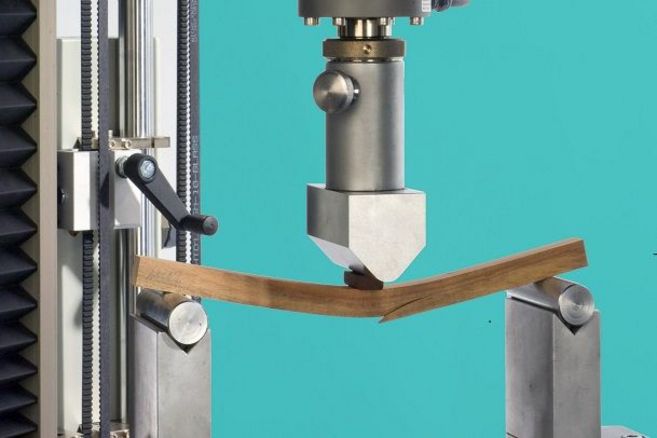Teaching Collection
The collection of the Thünen Institute and the University of Hamburg provides important visual, demonstration and research material for teaching and research. This collection, which focuses on forestry and timber, was founded almost 100 years ago. On around 200 m2 of exhibition and work space, it houses around 10,000 exhibits and covers the areas of classic herbar as well as fossils, wood damage, forest side use or wood materials.
Herbar (Plant collection)
The herbar with a volume of around 5000 specimens is oriented towards tree species that are important for the forestry and timber industry. It represents more than 170 plant genera. Subtropical and tropical species play an essential role.
The herbar also contains valuable original evidence of scientific expeditions and research projects. It is an indispensable teaching and research material for the study of the timber industry. No forestry faculty in Germany has a comparable herbar.
Cones, fruits and seeds
The collection includes around 2,000 specimens of cones of gymnosperms and fruits and seeds of angiosperms. Botanical superlatives such as the up to 60 cm tall cones of the sugar pine (Pinus lambertiana) arouse particular interest.
The largest known seed in the plant kingdom – the Seychelles nut (Lodoicea maldivica) from the palm family – is to be considered as well as the seeds of the North American sequoiad (Sequoia sempervirens, Sequoiadendron giganteum). They are considered to be the smallest tree seeds described. From these tiny ones develop the tallest or most massive recent conifers.
Samples of wood and bark
The extraordinary abundance of wood and bark samples includes complete stem sections and stem slices with bark as well as larger-sized wood samples. There are also samples of the lightest wood, such as balsa wood with a density of approx. 0. 08g/cm3, as well as samples of the heaviest wood, such as smallpox wood with a density of up to 1. 5g/cm3!
In addition to these “normal” samples, many wood anomalies and wood defects are presented, which are important for the use of wood. Of particular note are, for example, the very impressive tuber of an oak (Quercus spec. ) or a cut-out from the “quarter trunk” of another species of oak. In addition, there are also samples of different modern wood materials and the use of wood.
Fossils
A highlight of the collection are the plant fossils of different geological epochs. Petrified tree ferns and horsetail sections from the Carbon and Permian periods (approx. 250 million years) are found alongside petrified woods and conifer cones from the Jurassic and Cretaceous periods (approx. 150 million years). Particularly impressive in many of these exhibits is the complete preservation of structural features such as annual rings or individual wooden cells.
Wood damage
Fungi, bacteria and also animals, especially insects, use wood as a source of food, habitat and brood care. This results in wood damage, which changes wood properties such as colour, strength, structure and mechanical strength. Numerous specimens show the variety of wood damage that can occur in living trees, but also in stored and used wood.
Wood ingredients
Trees provide more than wood. “Non-timber forest products” have always been of great economic and ecological importance. Without the milk juice of the rubber tree (Hevea brasiliensis), there would be no rubber products such as car tyres. Without tannins, no leather! These substances are extracted from the wood and bark tissue of trees.
The collection offers a large number of samples and products. Including latex, rubber, cork, copals, dyes, tannins, quinine . . . to name just a few.




![Cones of the sugar pine [Translate to English:] Zapfen der Zuckerkiefer](/media/_processed_/1/3/csm_IMG_0948_134790a910.jpg)



![Tannin, incense, camphor [Translate to English:] Gerbstoff, Weihrauch, Kampher](/media/_processed_/1/1/csm_IMG_0965_347972849c.jpg)



